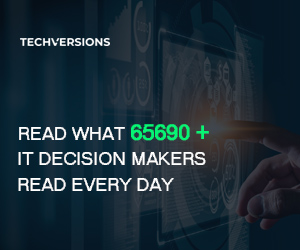The average trading firm processes over 10 million transactions per second during peak hours. Yet most financial institutions still rely on batch processing systems built decades ago. When milliseconds determine profit margins and regulatory compliance depends on real-time reporting, outdated architectures become liability magnets.
Financial services leaders are discovering that event-driven architecture is necessary for survival. Companies like Goldman Sachs and JPMorgan have invested billions in streaming data platforms, not because it’s trendy, but because their competition depends on it.
Understanding Event-Driven Architecture in Financial Context
Event-driven architecture treats every financial action as a discrete event that triggers downstream processes. Unlike traditional request-response systems, events flow continuously through your infrastructure, enabling real-time decision making.
Think of it like a financial newsroom. Traditional systems wait for someone to ask “what happened today?” before compiling reports. Event-driven systems broadcast every market movement, trade execution, and compliance alert the moment they occur. Every system that needs this information receives it instantly.
This approach transforms how financial applications handle everything from fraud detection to algorithmic trading, making previously impossible real-time scenarios achievable.
The Technical Foundation: Apache Kafka and Financial Streaming
Apache Kafka has become the backbone of financial streaming architecture because it solves the fundamental challenge: handling massive message volumes with guaranteed delivery and ordering. Major financial institutions process billions of events daily through Kafka clusters.
The magic happens in Kafka’s partition system. Each financial instrument, customer segment, or transaction type gets its own partition, ensuring related events maintain order while enabling parallel processing. A bank might partition by account number, ensuring all transactions for Account #12345 process sequentially while other accounts process simultaneously.
Stream processing frameworks like Apache Flink or Kafka Streams transform raw events into actionable insights. These tools can detect fraud patterns across millions of transactions, calculate risk exposures in real-time, or trigger automated compliance reports—all within milliseconds of events occurring.
Real-World Implementation: From Chaos to Clarity
Building event-driven financial systems requires careful planning around three critical areas: schema evolution, error handling, and data lineage. Financial data structures evolve constantly due to regulatory changes and product innovations. Your architecture must handle schema updates without breaking downstream consumers.
Error handling becomes crucial when processing financial events. Unlike e-commerce systems where delayed processing might mean a customer waits longer for recommendations, financial errors can trigger regulatory violations or trading losses. Dead letter queues and circuit breakers aren’t optional—they’re regulatory requirements.
Data lineage tracking ensures you can trace any financial calculation back to its source events. Regulators don’t accept “the algorithm decided” as explanations. Every decision must be auditable, which means comprehensive event logging and traceability.
Overcoming Common Implementation Challenges
The biggest obstacle is organizational. Traditional financial institutions have teams specialized in batch processing, overnight jobs, and scheduled reports. Event-driven architecture requires new mindsets and skills.
Start with high-value, low-risk use cases. Real-time customer notifications or internal dashboard updates provide immediate value without touching critical trading systems. Success with these projects builds organizational confidence for larger transformations.
Data quality becomes more visible in streaming systems. Errors that hide in overnight batch jobs surface immediately in real-time streams. This visibility is ultimately beneficial, but requires upfront investment in data validation and cleansing processes.
Also read: Top Women-Led FinTech Companies Breaking Industry Norms
The Strategic Advantage: Why This Matters Now
Financial institutions implementing event-driven architecture report 60-80% improvements in processing speed and 40% reductions in operational costs. More importantly, they can offer products and services impossible with traditional architectures. The question isn’t whether to adopt event-driven architecture, but how quickly you can implement it before competitors gain insurmountable advantages.








